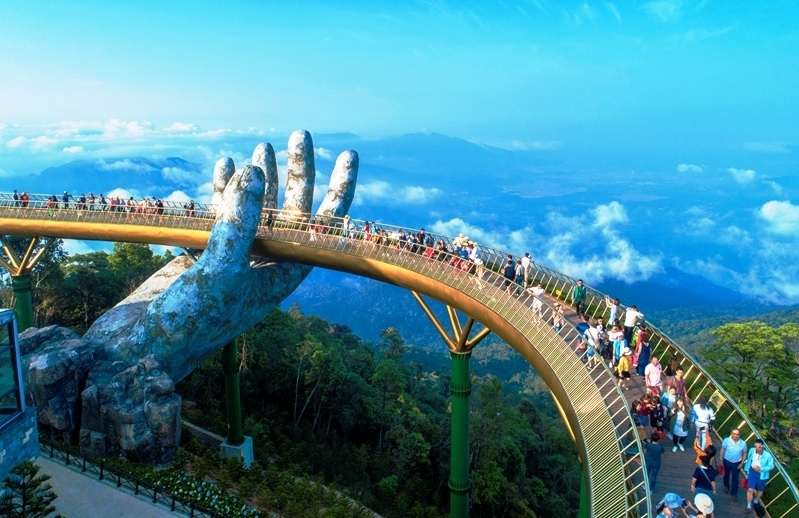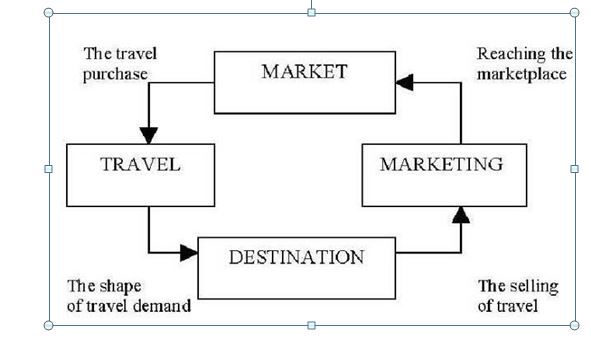
The article shows the detail understanding of Different Major Tourism System Models below along with examples and where they are applied.
- Leiper’s Geo Spatial Model, 1979 (Updated in 1990): Leiper describes three main geographical elements in his system’s model. These are:
- The Human Element: Tourists, Visitors, Stakeholders all consists of the human element who directly or indirectly influence the tourism system.
- Geographical Element: Natural Resources, Locations, Floras and Faunas, Regions consists of the geographical elements of any destination.
(i) Traveler-generating region. For ex- A resident of France wants to travel to South-East Asian countries so the traveler generating region is France.
(ii) Tourist destination region. For ex- The South-East countries are the tourist destination region.
(iii) Transit route region: The time taken and the destination that came in between going from France to South Asian Countries are the transit regions.
- The Industrial Element: Tourism Industry is the main component of this segment. For ex- A France based resident traveling to South-East countries experiences different cultural practices, food, attractions and many more that wholly comprises of a tourism system.
2. Matthesian & Wall, 1982: The temporary movement of people to destinations outside their normal places of work and residence. The developed five stages:
- Felt Need: The visitors decides on whether they need a break from their daily life and experience other destinations.
- Information collection and evaluation: The search for proper destination that serves their need for relaxment, adventure or anything starts.
- Travel decision: The different destinations are then researched until a final one is decided on the basis of various parameters like distance, mode of transport, stay options, familiarity, and many more.
- Travel Preparation: With the destination being decided, the actual preparation before actually visiting the destination starts with application for visa or permit, getting things attended etc.
- Travel Satisfaction: Visiting any destination would indulge a person into many experiences that would bring satisfaction at different levels or may they feel unsatisfied.
3. Mill-Morrison, 1985: Commercially oriented system having four parts:

Mill & Morrisson in 1985 had given a model to show four major parts of the tourism system. Marketing, Market, Travel, and Destination which keeps following one another in a loop. The diagram shows, how a destination markets itself showing the attractions, tourism products it offers. The marketing is done on offline and online market. Getting influenced by the market, people gets motivated to visit the destination and travels to it. The destination then provides the products and services it promised in its marketing, and then the cycle again repeats itself.
4. Butler’s Tourism Area Life Cycle, 1980:
i. Exploration
ii. Involvement
iii. Development
iv. Consolidation
v. Stagnation
vi. Rejuvenation/ Decline
5. Doxey’s Irridex Theory, 1975: There are four stages of the theory given by Doxey in 1975:
i. Euphoria: It means that at first, people of a destination are feeling and getting to understand the tourists coming into their destination.
ii. Apathy: It means that the residents are now interacting with the tourists, and both of them are residing in the place.
iii. Irritation: The residents are getting agitated how the increasing number if tourists ultimately starts destroying their surroundings through overcrowding, usage of resources, taking up of major attractions, creating traffic, pollution and many more.
iv. Antagonism: Residents starts protesting and would block on making tourists enter their destination.
6. Demonstration Effect: The effect observed as a natural consequence of tourism- exact imitation, deliberately inexact imitation, accidental and social learning.
7. Dogan,1989: Dorgan emphasized on response to tourism impacts rather than attitude of transforming homogenous touristic experiences to heterogenous experiences.
8. Ap & Crompton, 1998: Ap & Crompton had developed the Tourism Impact Scale in 1998. A 35-item tourism impact scale was developed. It was derived from an initial pool of 147 impact items drawn from personal interviews and the literature, and it was refined using classical scale-development procedures. The scale comprises seven domains: social and cultural, economic, crowding and congestion, environmental, services, taxes, and community attitudes.
9. Stanley Plog,1967 (updated to 1974): Stanley Plog had developed a model in which he described tourists into three categories:
- Allo-centric: In this, the tourists who wants to try new, exotic things during their travel are considered in the category. They are considered to be extreme risk takers.
- Mid-centric: In this, the tourists would experience new things but to a limited level in which the tourists would also be cautious.
- Psycho-centric: In this, the tourists are extremely experiencing familiar places and activities that are habitual to them with no strangeness.
Also Read:
- A Bite of the Unexpected: How South American Food Influencers are Uncovering Hidden Gems
- Food Influencers Shaping Tourism Trends in North America
- Top 10 Food Influencers in Asia : Icons of Flavor & Creativity
- 2 Major Power of Food Influencers in Promoting Local Cuisines in Europe
- Top Case Study of How Food Influencers Boosted Tourism in Bali and the Maldives
10. Crompton’s Push & Pull, 1979: “Push & Pull factors have been widely accepted to explain tourist behavior and travel motivations”. He introduced 7 socio-psychological motives:
- escape from a perceived mundane environment,
- exploration and evaluation of self,
- relaxation,
- prestige,
- regression,
- enhancement of kinship relationships and
- facilitation of social interaction and 2 cultural motives: novelty and education.
11. Krippendorf, 1987: He identified travel motivations. The subject of tourist motivation involves questions about why people travel. However, identifying clearly the relationships between an individual’s motivations and selection of a destination is a difficult task. Krippendorf (1987), for instance, identified a number of tourist motivations, including:
- Recuperation and regeneration;
- Compensation and social integration;
- Escape;
- Communication;
- Broadening the mind;
- Freedom and self-determination;
- Self-realisation;
- Happiness.
12. Gunn, 1979: In his book, Tourism Planning, Gunn included tourism fundamental system, he referred five components: tourist, transport, attractions, services-facilities, information-direction.
13. Gray, 1970: He defines the same push and pull motives as ‘sun lust’ and ‘wanderlust’. Sun lust describes those “vacations in which are motivated by the desire to experience different or better amenities for a specific purpose than are available in the environment in which one normally lives” and wanderlust is described as the “basic trait in human nature that causes some individuals to want to leave things with which they are familiar and to go and see at first hand different existing cultures and places”.
14. McIntosh (1977): 4 basic travel motivations: Physical Motivators, Cultural Motivators, Interpersonal Motivators & Prestige Motivators – desire for recognition, appreciation, and good reputation.




